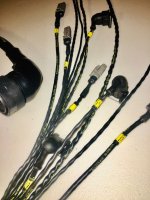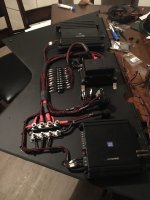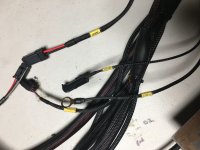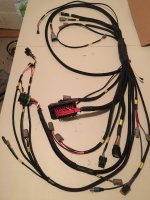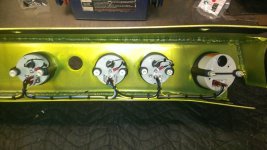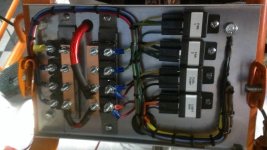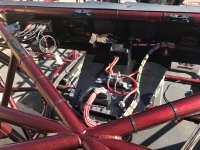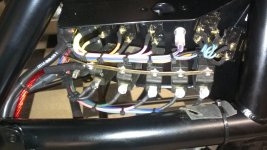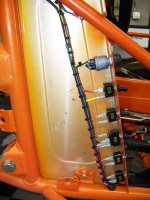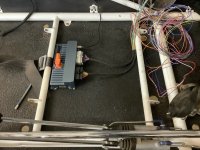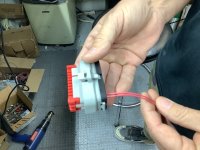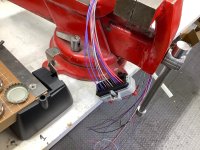If you can afford to have a Pro like
@Travelah wire your car its worth it in the end. You can be assured everything will work and work season after season.
If you can't, then IMO just make sure you have a plan - draw EVERYTHING out before you start - know where everything goes and how it all connects - switches, fuses, breakers, connector types and correct wire gauge. Nothing is worse than forgetting something or using the wrong gauge wire (and it happens alot)
The assembly process and materials are important especially for the long run as corrosion gets into every non "sealed or glued" connection - oxygen and wire just don't mix Sealed crimp connections are easy and fast for most people. Solder and shrink (with sealing glue) doing it right is a skill and if you don't support the wire it could crack over time.
It takes a long time to do it right,so just label everything as you go - even if its temp labeling with tape and marker - just to make sure you connect correctly.
Materials wise that split tubing not what I would use, but iut way better than just running wires alonwe - it offers rub resistance. the PET STYLE wire cover is great but it holds sand. I now heat shrink the entire harness - clear if its over pet or black if its over wire, but make sure you "test the harness before you cover it or install it if possible. Try to make it so the harness can be pout in in one piece or with connectors. But remember every connector is another possible failure point (especially if you have not assembled them correctly. The connectors I use (and
@Travelah) use require special tools to assemble correctly - I have over $500 just in assembly tools. Sometimes alternative connectors are the way to go or even connectors with pigtails (not ideal but acceptable)
I will still use non stick harness tape on many cars - if I know the harness id going to be subject to someone washing their car ot taking it out in rain - the harness tape is actually more resistant and cheap (budget) if you do it right it looks good- otherwiser terminating PET correctly with shrink and boots is literally hundreds of dollars just for the boots.
I like Mil-spec harnesses, but for what we do its overkill baller stuff that buys you nothing over good best-practice harness builds
Making the harness, gauges, and other components easily removable is for move valuable.
If you can use relays everywhere do it - thats a matter of choice - more to fail, but a guarantee things will work well when they work. Switches fdon't do well over time with high current. Also use sealed relays like HELLAs if you can - they do not have breathe like Bosch relays do and in the sand Bosch relays do fail
I use sealed 70Amp relays - cost more, never fail. Solid state relays like the MSD relay packs are good as well and easy for newbie wiring
Do not use relays with fuses built in - great idea - crappy in real world - fuses get hot and fall out- always -
I will never use Metripak relays or Relay boards again - no matter the brand - they look great and are sealed, but cannot handle over 15amps in practice - I used them on a few cars and had to replace them within a year (expensive lesson) watching them melt when the fans come on with 40 amp relays is kinda depressing ..
I always tell people that car batteries have enough current to weld 1/4" steel together - so be careful of shorts - fuse everything .. and follow the rules the manufacturers give you - for instance Radios and ECUs need to go directly to the battery
NEVER use copper clad wire - always use pure copper - believe me its not worth the money you save
And always use a main cut off switch that is easy to reach if you crash or flip -it could be a life saver
Most people get frustrated and just start cutting corners ... But don't worry we don't keep these cars that long - its the next guys problem

Just some small ideas FWIW

